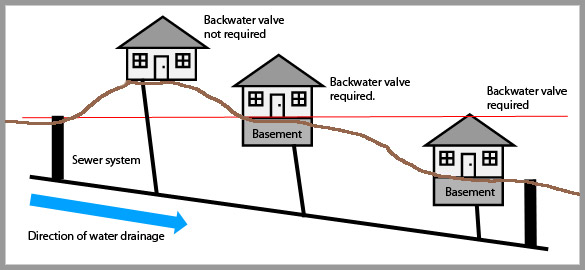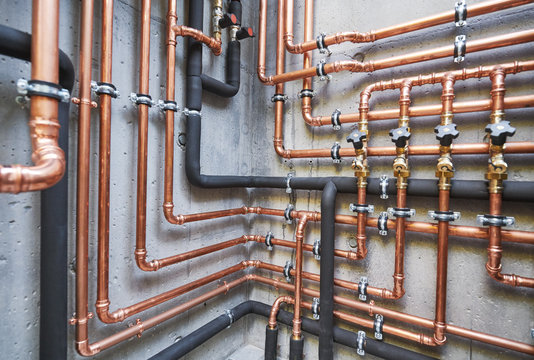Everything You Need to Know to Your Home's Plumbing System Anatomy
Everything You Need to Know to Your Home's Plumbing System Anatomy
Blog Article
Presented here on the next paragraphs yow will discover lots of good quality news regarding Plumbing Installation 101: All You Need to Know.

Understanding exactly how your home's pipes system works is essential for every single property owner. From supplying clean water for alcohol consumption, cooking, and showering to safely eliminating wastewater, a well-kept pipes system is important for your family's health and wellness and comfort. In this detailed guide, we'll check out the intricate network that comprises your home's pipes and offer pointers on maintenance, upgrades, and taking care of common problems.
Introduction
Your home's plumbing system is greater than just a network of pipelines; it's a complex system that ensures you have accessibility to clean water and effective wastewater elimination. Understanding its elements and just how they interact can help you stop costly repair services and ensure everything runs smoothly.
Standard Components of a Pipes System
Pipelines and Tubing
At the heart of your plumbing system are the pipelines and tubes that carry water throughout your home. These can be made from numerous materials such as copper, PVC, or PEX, each with its advantages in regards to durability and cost-effectiveness.
Fixtures: Sinks, Toilets, Showers, and so on.
Fixtures like sinks, commodes, showers, and bath tubs are where water is utilized in your house. Understanding exactly how these components attach to the plumbing system assists in detecting problems and planning upgrades.
Valves and Shut-off Points
Shutoffs regulate the circulation of water in your plumbing system. Shut-off valves are vital during emergency situations or when you require to make fixings, allowing you to separate parts of the system without interfering with water flow to the entire home.
Water System
Main Water Line
The main water line links your home to the local water or a private well. It's where water enters your home and is distributed to different fixtures.
Water Meter and Stress Regulator
The water meter steps your water use, while a stress regulatory authority makes certain that water streams at a risk-free stress throughout your home's pipes system, protecting against damages to pipelines and components.
Cold Water vs. Warm water Lines
Comprehending the difference in between cold water lines, which provide water directly from the major, and warm water lines, which lug warmed water from the hot water heater, assists in fixing and preparing for upgrades.
Drain System
Drain Pipes Piping and Traps
Drain pipelines lug wastewater far from sinks, showers, and bathrooms to the drain or sewage-disposal tank. Catches stop sewer gases from entering your home and additionally catch particles that might cause clogs.
Air flow Pipelines
Ventilation pipelines enable air into the water drainage system, stopping suction that can slow down water drainage and trigger catches to empty. Proper air flow is vital for maintaining the honesty of your pipes system.
Importance of Correct Drain
Ensuring appropriate drainage stops back-ups and water damages. Consistently cleaning up drains pipes and preserving catches can prevent pricey repair work and prolong the life of your plumbing system.
Water Heater
Types of Hot Water Heater
Water heaters can be tankless or typical tank-style. Tankless heating units warmth water on demand, while containers store heated water for instant usage.
Upgrading Your Pipes System
Reasons for Updating
Updating to water-efficient fixtures or changing old pipes can boost water quality, decrease water bills, and raise the worth of your home.
Modern Pipes Technologies and Their Benefits
Explore innovations like smart leak detectors, water-saving bathrooms, and energy-efficient water heaters that can save cash and minimize environmental impact.
Price Factors To Consider and ROI
Determine the ahead of time expenses versus long-term cost savings when considering pipes upgrades. Numerous upgrades pay for themselves with lowered utility costs and fewer repairs.
Exactly How Water Heaters Link to the Plumbing System
Comprehending how water heaters attach to both the cold water supply and warm water distribution lines aids in diagnosing concerns like insufficient warm water or leakages.
Upkeep Tips for Water Heaters
Routinely purging your water heater to eliminate sediment, inspecting the temperature level settings, and evaluating for leakages can expand its life expectancy and boost energy effectiveness.
Common Plumbing Problems
Leaks and Their Reasons
Leaks can happen as a result of aging pipes, loosened installations, or high water pressure. Attending to leakages quickly avoids water damages and mold development.
Clogs and Obstructions
Obstructions in drains and commodes are usually caused by flushing non-flushable things or a build-up of grease and hair. Utilizing drainpipe displays and bearing in mind what goes down your drains can prevent blockages.
Indications of Pipes Troubles to Watch For
Low water stress, slow-moving drains pipes, foul odors, or unusually high water bills are indications of prospective pipes troubles that need to be addressed quickly.
Plumbing Upkeep Tips
Regular Evaluations and Checks
Arrange annual pipes assessments to capture concerns early. Look for signs of leaks, corrosion, or mineral buildup in faucets and showerheads.
DIY Maintenance Tasks
Basic jobs like cleaning faucet aerators, checking for toilet leaks using dye tablet computers, or shielding revealed pipelines in cool environments can stop significant pipes problems.
When to Call an Expert Plumbing Technician
Know when a plumbing issue calls for expert know-how. Trying complicated repair work without proper knowledge can bring about even more damage and higher repair work prices.
Tips for Lowering Water Use
Basic routines like repairing leaks quickly, taking shorter showers, and running full lots of washing and recipes can save water and lower your energy expenses.
Eco-Friendly Plumbing Options
Consider lasting pipes materials like bamboo for floor covering, which is durable and environment-friendly, or recycled glass for countertops.
Emergency Readiness
Steps to Take During a Pipes Emergency
Know where your shut-off shutoffs are located and just how to switch off the water system in case of a burst pipeline or significant leak.
Relevance of Having Emergency Calls Helpful
Maintain get in touch with information for regional plumbings or emergency situation services easily offered for quick feedback during a plumbing dilemma.
Environmental Impact and Conservation
Water-Saving Components and Home Appliances
Mounting low-flow faucets, showerheads, and bathrooms can significantly reduce water use without sacrificing performance.
Do It Yourself Emergency Fixes (When Suitable).
Temporary fixes like utilizing duct tape to spot a leaking pipe or positioning a bucket under a leaking tap can minimize damage till a specialist plumber shows up.
Final thought.
Recognizing the makeup of your home's plumbing system equips you to keep it effectively, conserving money and time on repairs. By complying with normal upkeep routines and staying notified concerning modern plumbing technologies, you can ensure your pipes system runs successfully for years to find.
HOW YOUR PLUMBING SYSTEM WORKS
Which Pipes Do What?
Blue lines = fresh water supply entering the building Red lines = hot water supply entering the building Grey lines = pipes carrying waste away from the building and venting pipes carrying gases away from the building (through the roof) YOUR MAIN PLUMBING SYSTEMS
There are two main plumbing systems that support your home s basic plumbing needs one that brings clean water into your home, and one that sends dirty water away from your home. Connected to the toilet, bath, shower, and other faucets in your home, these two systems keep your water flowing in the right directions.
ACCESSING FRESH WATER
Fresh and clean water is brought into your home through the main water supply line . Filtered through one pipe, this water is pressured to flow into the various fixtures in your home at any given time.
This water can be sourced from a well located on your property, a pond or river (mostly cottages), or, as in most cases, from the city s municipal water treatment centre. However, it is important to note that water that is untreated, such as the water siphoned from ponds or rivers, may not be safe to drink. Personal water supplies always need to be treated for hardness and contaminants before consumed.
MUNICIPAL WATER SUPPLIES
Improve taste and odour Remove sediment Eliminate hardness Reduce chlorine COLD WATER SUPPLY VS. HOT WATER SUPPLY
Cold water flows into your home or building through the service line, which then distributes hot or cold water to your fixtures. This line is most commonly run through a central column that runs floor to floor. Hot water runs in short and straight pipes as the longer the pipeline, the more heat that will be lost in the transfer. Having shorter pipes also allows residents to access hot water more quickly.
WASTE WATER SYSTEM
Your wastewater system is divided into two parts pipes that send wastewater away from your home and venting pipes that send sewer gas away from your home. Sewage water travels through pipes that flush the water and waste towards local sewers that are operated and managed by your city or town. Most sewer systems rely on gravity to move the wastewater to where it needs to go.
The further away from your toilet or sink, the larger wastewater pipes become. This allows for waste to be disposed of from various parts of your home or business at once without pipe blockages. The angle and flow of these pipes are also essential for keeping your waste pipes clear of build up.
https://harrisplumbing.ca/how-your-home-plumbing-system-works/

I have been very fascinated with Anatomy of a House: Understanding the Components and I'm hoping you enjoyed our blog post. Do you know another person who is enthusiastic about the niche? Take a moment to promote it. Many thanks for taking the time to read it.
Schedule An Appointment Report this page